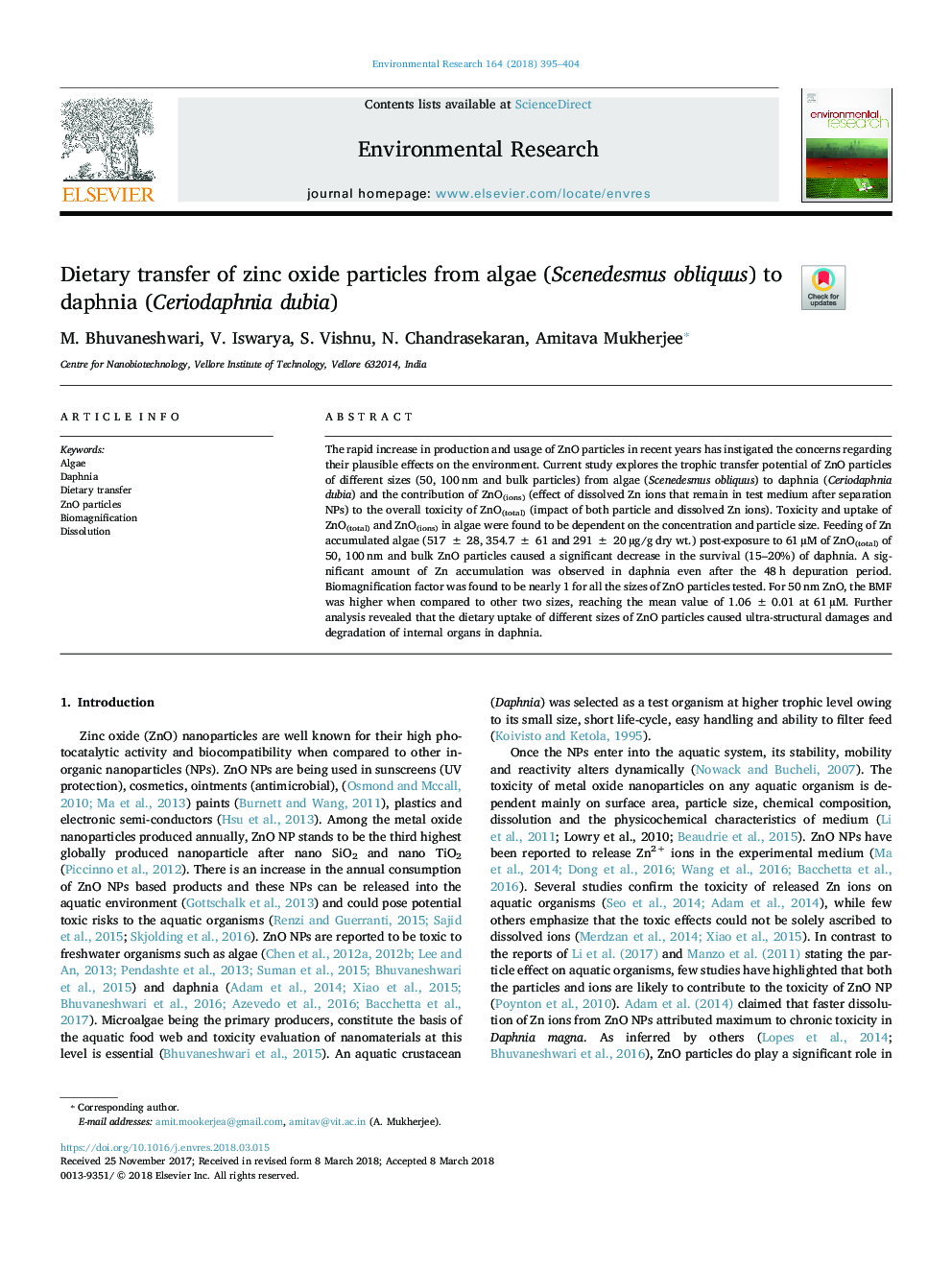| Article ID | Journal | Published Year | Pages | File Type |
|---|---|---|---|---|
| 8869086 | Environmental Research | 2018 | 10 Pages |
Abstract
The rapid increase in production and usage of ZnO particles in recent years has instigated the concerns regarding their plausible effects on the environment. Current study explores the trophic transfer potential of ZnO particles of different sizes (50, 100â¯nm and bulk particles) from algae (Scenedesmus obliquus) to daphnia (Ceriodaphnia dubia) and the contribution of ZnO(ions) (effect of dissolved Zn ions that remain in test medium after separation NPs) to the overall toxicity of ZnO(total) (impact of both particle and dissolved Zn ions). Toxicity and uptake of ZnO(total) and ZnO(ions) in algae were found to be dependent on the concentration and particle size. Feeding of Zn accumulated algae (517â¯Â±â¯28, 354.7â¯Â±â¯61 and 291â¯Â±â¯20â¯Âµg/g dry wt.) post-exposure to 61â¯ÂµM of ZnO(total) of 50, 100â¯nm and bulk ZnO particles caused a significant decrease in the survival (15-20%) of daphnia. A significant amount of Zn accumulation was observed in daphnia even after the 48â¯h depuration period. Biomagnification factor was found to be nearly 1 for all the sizes of ZnO particles tested. For 50â¯nm ZnO, the BMF was higher when compared to other two sizes, reaching the mean value of 1.06â¯Â±â¯0.01 at 61â¯ÂµM. Further analysis revealed that the dietary uptake of different sizes of ZnO particles caused ultra-structural damages and degradation of internal organs in daphnia.
Related Topics
Life Sciences
Environmental Science
Health, Toxicology and Mutagenesis
Authors
M. Bhuvaneshwari, V. Iswarya, S. Vishnu, N. Chandrasekaran, Amitava Mukherjee,
